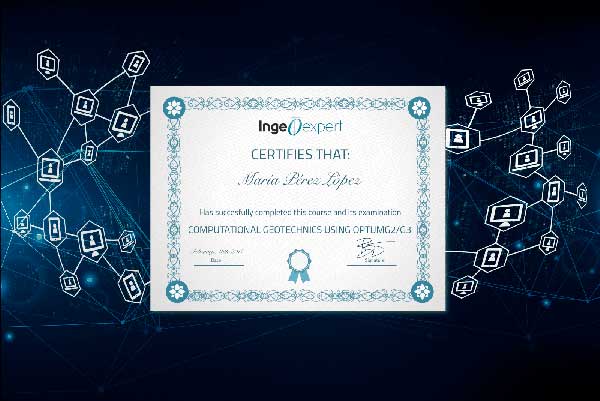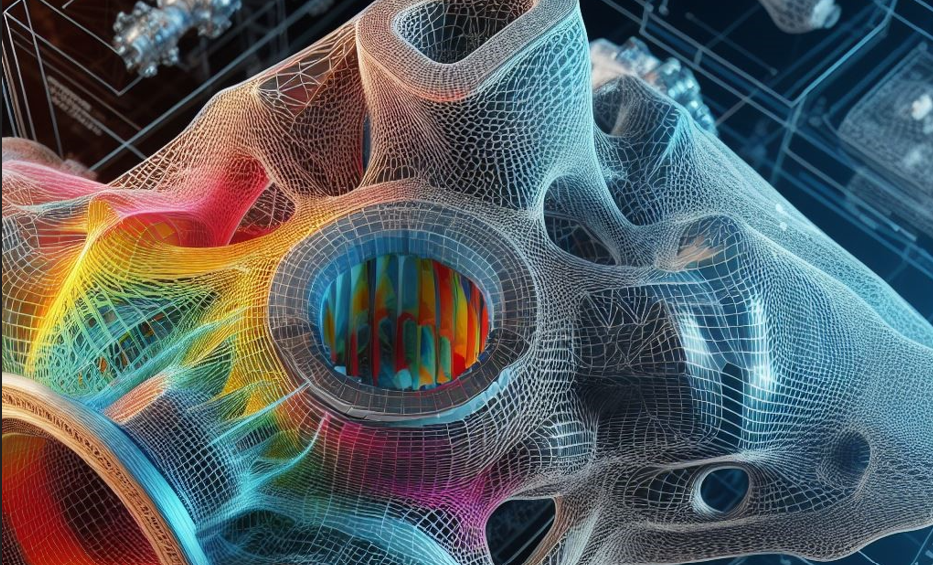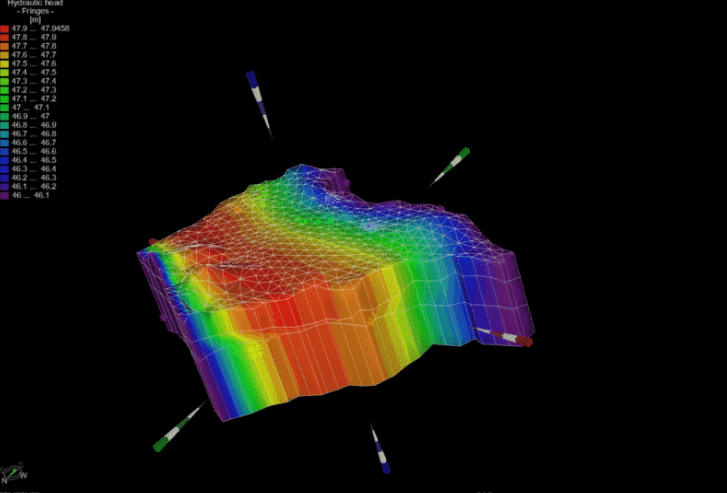The engineering geology and geomorphology of relict glacial and periglacial terrains
Online course |
|
50 hours / 6 weeks |
|
To be determined |
Introduction
This module is designed to consider the Quaternary with respect to engineering geology including aspects of glacial and periglacial ground models, problematic soils and ground conditions, illustrated with engineering geology case studies from relict glacial and periglacial terrains.
Objectives
- Explain the significance of the Quaternary to Engineering Geology.
- Introduce the Quaternary landsystems, landforms and deposits relevant to engineering geology.
- Develop Quaternary Ground Models for use in ground engineering practice.
- Categorize and describe problematic ground in relict glacial and periglacial terrains.
Limited places.
- The Quaternary: Global climate change
- Glacial ground models
- Periglacial ground models
- Glaciogenic and periglacial deposits
- Glaciogenic and periglacial landforms and structures
- Engineering geology case studies from relict glacial and periglacial terrains
David Giles
Dr David Giles is a graduate of the University of Portsmouth Engineering Geology and Geotechnics degree with over 40 years’ experience in academia and industry. His experience includes 28 years lecturing and researching in Engineering Geology at the University of Portsmouth. He has also worked at the British Geological Survey and with Mott MacDonald. His principal areas of expertise and experience includes glacial and periglacial engineering geology, engineering geomorphology, landslides and slope stability, contaminated land, hazard and risk, geohazard management and remediation, spatial data modelling and geographical information systems, geostatistical techniques, remote sensing and image analysis. He is particularly interested in computer modelling with a PhD in Computer-Based Modelling and Analysis in Engineering Geology.
Dr Giles is an active member of the Engineering Group of the Geological Society of London, a past Chair and an active member of Geological Society Working Parties including UK Geological Hazards, which he chairs and the Engineering Geology and Geomorphology of Glaciated and Periglaciated Terrains. He has published over 65 papers and supervised 7 PhD theses.
The course is delivered online through our easy-to-use Virtual Campus platform. For this course, a variety of content is provided including:
– eLearning materials
– Videos
– Interactive multimedia content
– Live webinar classes
– Texts and technical articles
– Case studies
– Assignments and evaluation exercises
Students can download the materials and work through the course at their own pace.
We regularly update this course to ensure the latest news and state-of-the-art developments are covered, and your knowledge of the subject is current.
Live webinars form part of our course delivery. These allow students and tutors to go through the course materials, exchange ideas and knowledge, and solve problems together in a virtual classroom setting. Students can also make use of the platform’s forum, a meeting point to interact with tutors and other students.
The tutoring system is managed by email. Students can email the tutor with any questions about the course and the tutor will be happy to help.
This course is suitable for those working in the ground engineering industry, specifically in relict glacial and periglacial terrains as seen for example in the UK, northern Europe and upland areas of Asia and the Americas. Graduates in the earth sciences, civil engineering, and physical geography will be particularly suited to the course.
Once a student finishes the course and successfully completes the assignments and evaluation tests, they are sent an accreditation certificate. The certificate is issued by Ingeoexpert to verify that the student has passed the course. It is a digital certificate that is unique and tamper-proof – it is protected by Blockchain technology. This means it is possible for anyone to check that it is an authentic, original document.
You will be able to download the certificate in an electronic format from the Virtual Campus platform. The certificate can be forwarded by email, shared on social networks, and embedded on websites. To see an example, click here.
Completion of this course will equip the attendees with an understanding of the fundamentals of the Quaternary related engineering geological environment providing them with key skills, knowledge and understanding to work in companies operating in these relict terrains.
Introduction
This module is designed to consider the Quaternary with respect to engineering geology including aspects of glacial and periglacial ground models, problematic soils and ground conditions, illustrated with engineering geology case studies from relict glacial and periglacial terrains.
Objectives
- Explain the significance of the Quaternary to Engineering Geology.
- Introduce the Quaternary landsystems, landforms and deposits relevant to engineering geology.
- Develop Quaternary Ground Models for use in ground engineering practice.
- Categorize and describe problematic ground in relict glacial and periglacial terrains.
Limited places.
- The Quaternary: Global climate change
- Glacial ground models
- Periglacial ground models
- Glaciogenic and periglacial deposits
- Glaciogenic and periglacial landforms and structures
- Engineering geology case studies from relict glacial and periglacial terrains
David Giles
Dr David Giles is a graduate of the University of Portsmouth Engineering Geology and Geotechnics degree with over 40 years’ experience in academia and industry. His experience includes 28 years lecturing and researching in Engineering Geology at the University of Portsmouth. He has also worked at the British Geological Survey and with Mott MacDonald. His principal areas of expertise and experience includes glacial and periglacial engineering geology, engineering geomorphology, landslides and slope stability, contaminated land, hazard and risk, geohazard management and remediation, spatial data modelling and geographical information systems, geostatistical techniques, remote sensing and image analysis. He is particularly interested in computer modelling with a PhD in Computer-Based Modelling and Analysis in Engineering Geology.
Dr Giles is an active member of the Engineering Group of the Geological Society of London, a past Chair and an active member of Geological Society Working Parties including UK Geological Hazards, which he chairs and the Engineering Geology and Geomorphology of Glaciated and Periglaciated Terrains. He has published over 65 papers and supervised 7 PhD theses.
The course is delivered online through our easy-to-use Virtual Campus platform. For this course, a variety of content is provided including:
– eLearning materials
– Videos
– Interactive multimedia content
– Live webinar classes
– Texts and technical articles
– Case studies
– Assignments and evaluation exercises
Students can download the materials and work through the course at their own pace.
We regularly update this course to ensure the latest news and state-of-the-art developments are covered, and your knowledge of the subject is current.
Live webinars form part of our course delivery. These allow students and tutors to go through the course materials, exchange ideas and knowledge, and solve problems together in a virtual classroom setting. Students can also make use of the platform’s forum, a meeting point to interact with tutors and other students.
The tutoring system is managed by email. Students can email the tutor with any questions about the course and the tutor will be happy to help.
This course is suitable for those working in the ground engineering industry, specifically in relict glacial and periglacial terrains as seen for example in the UK, northern Europe and upland areas of Asia and the Americas. Graduates in the earth sciences, civil engineering, and physical geography will be particularly suited to the course.
Once a student finishes the course and successfully completes the assignments and evaluation tests, they are sent an accreditation certificate. The certificate is issued by Ingeoexpert to verify that the student has passed the course. It is a digital certificate that is unique and tamper-proof – it is protected by Blockchain technology. This means it is possible for anyone to check that it is an authentic, original document.
You will be able to download the certificate in an electronic format from the Virtual Campus platform. The certificate can be forwarded by email, shared on social networks, and embedded on websites. To see an example, click here.
Completion of this course will equip the attendees with an understanding of the fundamentals of the Quaternary related engineering geological environment providing them with key skills, knowledge and understanding to work in companies operating in these relict terrains.
More info
Finish this course and get a certificate based on Blockchain
The engineering geology and geomorphology of relict glacial and periglacial terrains

Blockchain technology makes the certificate incorruptible, enabling companies to verifiy its autenticity.





Reviews
There are no reviews yet.